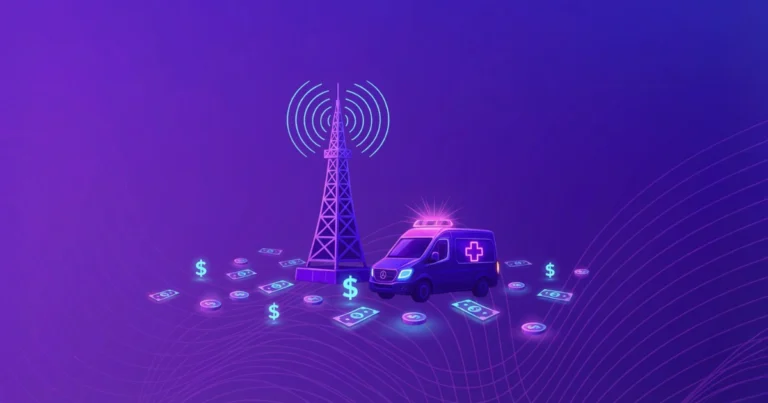In Telecom quote-to-order (Part I): the common pitfalls, we mapped the root causes of telco quote-to-order failures: fragmented catalogs, CPQ-to-BSS incompatibilities, incomplete/late validation, and brittle integrations. This post shows how BSS Magic – an ontology-powered AI layer that sits on top of your existing CPQ solves these issues. We’ll anchor each safeguard in production results: faster quoting, clean interoperability, and dramatically shorter migration timelines. Examples include CPQ order time reduced by ~80% at a Southeast Asian CSP, quote failures cleared after a CPQ customization regression, and TM Forum Open API certification compressed from years to weeks-all achieved by applying AI and a telco ontology across incumbent systems.
Why an overlay and not a replatform
Telco CPQ does not live in isolation; it coexists with CRM, product catalogs, charging/billing, order management, and fulfillment. Replatforming one element rarely fixes systemic failure modes, and often introduces new ones. An AI-powered, ontology-driven overlay takes a different approach: it understands the semantics of your existing data and processes, enforces correctness at the point of quoting, and harmonizes what downstream systems expect, without forcing an end-to-end changeout.
BSS Magic implements this overlay approach. Two ideas make it effective in production:
- A telco ontology that aligns product, customer, offer, pricing, and orders data structures across various CPQ, catalogs, charging/billing, and fulfillment solutions (leveraging TM Forum models and standards).
- AI agents and automation that accelerates flawless quoting, basket creation, validation and fulfillment while surfacing intelligent and compatible upsell and cross-sell opportunities.
With that foundation, here’s how the AI-powered overlay approach maps directly to the four pitfalls we identified in Part 1, and how it tackles the four costs that follow.
Single-prompt quoting: validated, complete quotes in seconds
The problem (recap). Enterprise telco quotes are multi-site, multi-product, and often partner-bundled. Traditional CPQ flows scatter logic across dozens of screens, rely on tribal knowledge, and validate too late-so errors are discovered downstream, after the quote has already become an order problem.
What the AI overlay changes. Leveraging an AI-driven Telco Ontology, BSS Magic turns screen-hopping, endless clicks and manual data entry into single-prompt quoting that assembles a basket, auto-completes mandatory fields, and runs pre-submit completeness and compatibility checks against catalog rules and charging/billing constraints. Complexity isn’t hidden; it’s controlled-at the moment it matters.
Why it matters to costs. Front-loaded validation cuts rework and backlog, and speed improves win rates. A Southeast Asian operator reported approximately 80% reduction in CPQ order time after introducing guided, validated quoting on top of its incumbent CPQ and CRM stack-translating directly into shorter cycles and fewer failed handoffs.
Downstream effect:
- Better customer experience: fewer broken quotes means fewer fallouts and faster time to order.
- Eroding margins & inefficient teams: less rework frees scarce experts for higher-value work.
- Lost opportunities & churn: when quotes arrive sooner and reflect what can be delivered, customers stick around.
Harmonize your CPQ & BSS and standardize interfaces (without pausing delivery)
The problem (recap). CPQ, catalog, charging/billing, CRM, and order management often disagree -about product identifiers, price elements, eligibility, or lifecycle state. Even when schemas connect, semantics don’t. That’s how “valid” quotes die during fulfillment or get under-billed.
What the overlay changes. BSS Magic’s ontology normalizes concepts across systems and exposes TM Forum-aligned interfaces as a reusable contract. Instead of brittle, one-off adapters, you get a shared semantic layer that both sides agree on. Critically, AI helps generate and verify Open API mappings and conformance rapidly, so you fix cross-system drift while the business keeps selling. A recent program compressed an estimated multi-year conformance effort to roughly one month, enabling faster, safer integration with operator environments that now routinely require TM Forum APIs.
Why it matters to costs. Harmonized semantics remove the classic “lost in translation” leak between quote and bill. With standards-compliant mappings tested up front, orders post cleanly and billing reflects what was sold.
Downstream effect:
- Revenue leakage & lost deals: fewer mismatches between CPQ and charging/billing; clean handoffs.
- Customer satisfaction: fewer billing disputes and fewer “we can’t deliver that after all” moments.
- Efficiency: integration debt falls as standardized contracts replace custom glue.
Automate discrepancy resolution and shift guardrails left
The problem (recap). Fragmented catalogs, version drift, and sprawling rules are the quiet killers of quote-to-order. A change that doesn’t propagate everywhere-or a rule inconsistent across systems-causes invalid bundles, missing price elements, or eligibility violations nobody spots until too late.
What the AI-overlay changes. BSS Magic watches for semantic discrepancies (IDs, price book entries, packaging rules, effectivity windows) and auto-resolves or flags them before submission. Because the ontology captures relationships (e.g., “this offer requires these network resources and these charges”), validation becomes context-aware: if a required component is missing or incompatible, the quote can’t proceed. In practice, operators have used this to clear quote failures introduced by CPQ customizations-fixing broken quotes, pricing mismatches, and order errors without pausing sales.
Why it matters to costs. If the system blocks or corrects errors before the quote leaves CPQ, you prevent expensive fallouts, protect margins, and preserve seller productivity.
Downstream effect:
- Revenue leakage & lost deals: completeness and compatibility checks eliminate “looks fine” quotes that later fail.
- Eroding margins & inefficient teams: rule enforcement and margin guardrails reduce over-discounting and rework.
- Customer satisfaction: fewer embarrassing reversals and credit notes.
Automate the path, keep humans for approvals and judgment
The problem (recap). Manual steps – re-keying data, emailing spreadsheets, hand-assembling bundles-slow everything and create errors. When change happens (new offer, new version), the risk spikes: brittle integrations break, teams firefight, customers wait.
What the AI-overlay changes. BSS Magic turns “manual” into managed. It orchestrates straight-through paths where possible and captures the right human interventions with system-level guardrails (e.g., price/margin approval flows). It also creates a digital twin of your BSS semantics to de-risk upgrades and migrations: AI maps entities and generates regression suites so changes land cleanly. One North American Tier-1 compressed a billing migration from eight months to ~14 days with this approach-evidence that automation and semantic contracts don’t just protect today’s orders; they future-proof tomorrow’s change.
Why it matters to costs. Automating the path reduces backlog and handoffs; capturing approvals in-flow keeps governance without slowing sales. A more resilient release cadence means fewer unplanned outages and fewer “stop-sell” periods.
Downstream effect:
- Revenue leakage & lost deals: fewer failure incidents during change windows.
- Efficiency: less manual reconciliation; IT shifts from firefighting to enabling.
- Customer satisfaction: stable delivery even as you evolve offerings.
Putting it together: from pains to measurable outcomes
Speed and reliability at once. Single-prompt, pre-validated quoting shortens cycle time and raises first-pass rates; harmonized semantics and standards-compliant APIs ensure those quotes become revenue without loss. In production, we’ve seen ~80% order-time reductions (complexity controlled), backlogs cleared after CPQ customizations caused failures (rules/quality addressed), and weeks-not-years API conformance (silos bridged).
Margin protection and growth. Because the ontology is the same layer that validates configuration, eligibility-aware upsell/cross-sell and margin guardrails can operate with confidence: recommended add-ons won’t violate rules, and discount floors are enforced without manual policing. The result is fewer “hero deals” that later hemorrhage margin-and more consistent attach that lifts deal value.
Change becomes routine. With a digital twin and generated tests, upgrades and migrations stop being all-hands risks. That’s not just an IT win; it’s a revenue protector. The less you halt selling or recover from regressions, the more predictable your quarter.
What to tell your board (and your sellers)
Revenue assurance: Clean quotes that post cleanly to charging/billing reduce leakage. Standards-aligned interfaces and left-shifted checks cut fallouts and credit notes.
Commercial velocity: Faster, accurate quoting shortens cycles and protects conversion.
Lower integration debt: Generating and validating Open APIs at AI speed changes integration from a perpetual project into an operating capability.
Change resilience: Digital-twin-driven migrations in ~14 days demonstrate that modernization can be evolutionary, not disruptive.
A reliable path from quote to cash
Failure-proofing quote-to-order in telecom is less about buying a new CPQ and more about making your whole stack speak the same language-and enforcing that language where it counts. An AI-powered Ontology that overlays your existing BSS stack turns complexity into guided action, replaces brittle links with tested contracts, and moves validation to the front of the process. The payoffs map 1:1 to the costs from Part 1: less leakage, better margins and productivity, fewer lost opportunities, and customers who get exactly what they were promised-on time.
If you haven’t read it yet, Part 1-“Telecom quote-to-order: the common pitfalls” outlines the failure patterns and their business impact. This post showed how to address them without tearing out what already works. The result is a CPQ-to-order pipeline that’s fast, correct, and resilient-exactly what enterprise customers expect, and what your P&L requires.
Ready to make your CPQ faster, simpler and way smarter? Book a demo today.





